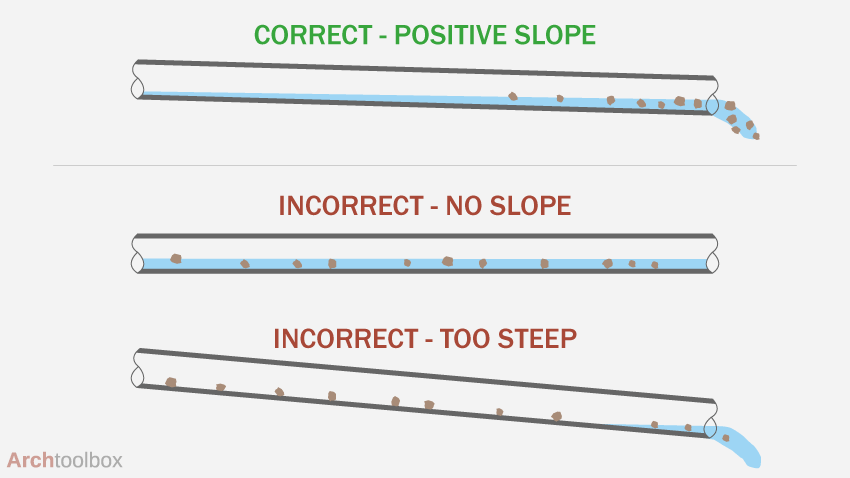Proper slope of gravity drainage and sewer pipes is important so that liquids flow smoothly, which helps transport solids away without clogging. A pipe that is too flat will prevent waste from flowing away. It is also commonly thought that pipes that are too steep will allow liquids to flow so quickly that solids will not be carried away.

Drainage pipes are usually run at the minimum allowable slope so that ceilings can be kept as high as possible.
Standard Horizontal Drainage Pipe Slope
According to the International Plumbing Code, drainage pipes should be run with a uniform slope at the following minimum pitches:
| PIPE DIAMETER | MINIMUM SLOPE | MINIMUM SLOPE % |
|---|---|---|
| 2 1/2" or smaller | 1/4" per foot | 2.08% |
| 3" to 6" | 1/8" per foot | 1.04% |
| 8" or larger | 1/16" per foot | 0.52% |
Large Diameter Sewer Pipe Slopes
Large sewer lines require calculations to determine the proper pitch. In general, sewer mains should be designed to have a flow rate of 2 feet-per-second during peak dry-weather conditions. Flow rates are usually kept below 10 feet per second. For flow rates greater than 10 feet-per-second, the pipes should be designed with anchors or other means of preventing the pipe from shifting.


